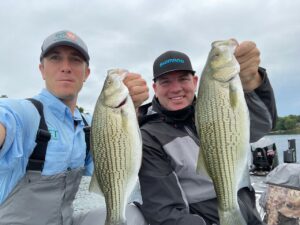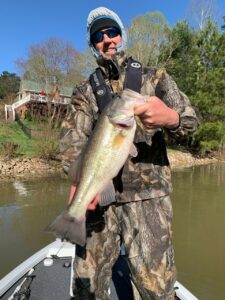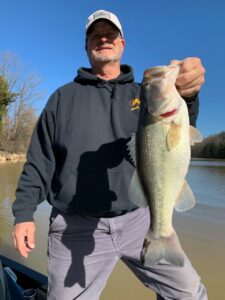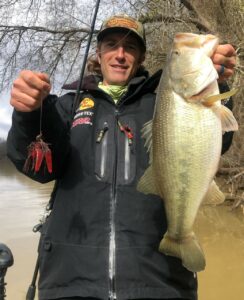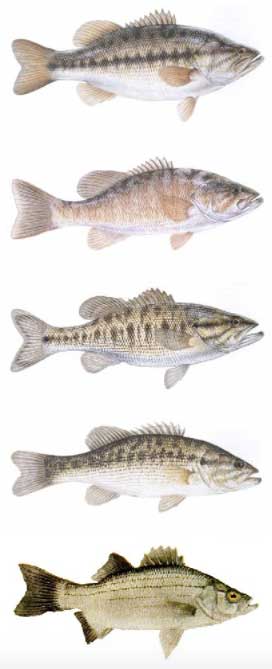Lake Wylie offers some of the best fishing in the southeast. Anglers from across the country as well as first timers from family docks have landed a wide variety of fish, from largemouth bass to channel catfish.
North Carolina
South Carolina
The most popular and productive time to fish for Bass in Lake Wylie are the months of March and April, when the water temperature is generally 57-68 degrees. During this time Bass are shallow, relating to cover, and eating often as they prepare to spawn and then defend their nests and their fry. You can catch them on a variety of presentations like Texas rigged plastics, spinnerbaits, and rattletraps to name a few. In the early summer most of the bass will transition out to deeper and cooler water to follow the forage, gizard shad. You can often find them schooled up on the end of points and main lake humps or islands that remain under water. Crankbaits, swimbaits, and other lures that can get down in the water column and imitate bait fish work most consistently. As the water begins to cool the fish will follow the food back into the creeks and shallower water again. If you find the baitfish you often have bass nearby. The same lures in a lighter version used in the summer will work, and this is also a great time of year for top water approaches. Then as the water temperature drops out of the 50’s the fish will return to the main channel and deeper areas of lake. Its time to slow down and fish with a jig or a suspending jerkbait to entice a bite. Look for the steeper sloping banks, hard drop offs, and channel swings.
Lake Wylie is also the home of nationally acclaimed fishing tournaments. Learn more at:
Checkout Rusty Hooks Bait & Tackle for more local info and updates
